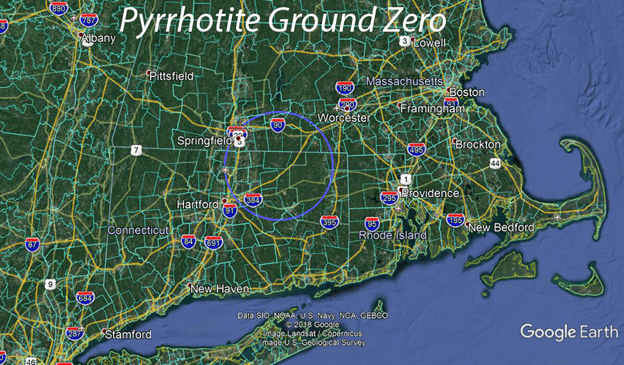Legal Aspects of The Built Environment Blog
Unmanned aircraft systems have become indispensable tools for construction project management, but rapid adoption has introduced regulatory compliance obligations and liability risks that require careful legal consideration. Drone technology provides construction companies with unprecedented capabilities for site surveying, progress monitoring, and safety inspections that were previously costly and time-consuming. However, the construction industry’s rapid adoption of drone technology has created new efficiencies alongside regulatory compliance obligations and liability risks that demand careful legal attention. Federal Aviation Administration Regulatory Framework Federal Aviation Administration regulations govern all commercial drone operations, including construction-related activities. The Part 107 rule establishes operational limitations that construction companies must observe, including daylight-only operations, visual line-of-sight requirements, and altitude restrictions. Construction sites often present complex airspace challenges, particularly in urban environments where temporary flight restrictions may apply or where operations near airports require additional coordination. The regulatory framework requires remote pilot certification for anyone operating drones commercially, including construction applications. Construction companies must ensure that personnel conducting drone operations possess appropriate Federal Aviation Administration certifications and understand applicable limitations. Violations can result in significant civil penalties and potential criminal liability. Professional Liability Considerations Professional liability considerations extend beyond regulatory compliance to encompass the accuracy and application of drone-collected …
The construction industry’s widespread adoption of Building Information Modeling has transformed project delivery, but this digital revolution brings complex liability questions that traditional construction contracts were never designed to address. Building Information Modeling technology creates a shared digital environment where architects, engineers, contractors, and subcontractors contribute to and rely upon a single comprehensive model. This collaborative approach generates significant benefits, including reduced conflicts, improved coordination, and enhanced project visualization. However, the very nature of shared digital modeling creates potential liability traps that project participants often fail to recognize until disputes arise. The Fundamental Challenge of Shared Responsibility The primary legal challenge lies in determining responsibility when BIM-related errors lead to construction defects, schedule delays, or cost overruns. Traditional professional liability concepts assume clear boundaries between design and construction responsibilities. BIM technology blurs these lines by enabling real-time model updates throughout the project lifecycle. Consider this scenario: when a structural engineer modifies the digital model to reflect field conditions, and that modification creates conflicts with mechanical systems, who bears responsibility for the resulting problems? The answer depends largely on contract language that frequently fails to address these scenarios adequately. Key Legal Consideration Standard form agreements developed before widespread BIM adoption contain …
Smart sensors now monitor everything from concrete curing temperatures to worker safety conditions, generating vast amounts of real-time data that inform critical project decisions. However, this technological advancement raises complex legal questions about data ownership, privacy protection, and liability for sensor-based decisions that the construction industry is only beginning to address. Data Ownership and Access Rights Construction IoT implementations typically involve multiple stakeholders contributing to and accessing shared data streams. Environmental sensors provided by concrete suppliers, safety monitoring systems installed by general contractors, and progress tracking devices deployed by project owners create interconnected data ecosystems. Determining ownership rights and usage permissions for this collectively generated information requires careful contractual planning that most standard construction agreements do not address. Data ownership disputes can arise when sensor information becomes crucial to dispute resolution or change order documentation. IoT Use Raises Many Critical Questions If temperature sensors indicate that concrete curing conditions required schedule adjustments, who controls access to the underlying data? When safety sensors detect conditions that influence project decisions, what rights do various stakeholders have to access and use this information? Privacy Regulation Compliance Privacy regulations add significant complexity to construction IoT deployments. Worker monitoring sensors may collect personal information subject …
Modular building being lowered by crane onto foundation
Most of my pre-law school building experience was in New England. Besides the ever changing weather, differing subsurface site conditions presented a variety of challenges. Ledge is commonplace but very hard to predict whether a nearby outcropping would interfere with excavation. Water well depth was typically difficult to predict even by drillers with local experience. And, most challenging was dealing with groundwater, especially flooded basements. Even with perc test holes, the distance from the septic field to the foundation increased the odds that the groundwater level in the excavation was different, or upon digging a spring was found. In Seattle, as a construction lawyer in the 1990s, I was called on frequently by owners to help diagnose and remedy wet or flooded foundations. One memorable project was a dream house being constructed by a tech millionaire. Soon after the foundation and then the slab were poured, the basement filled up with over a foot of water. The framers and follow on trades referred to it as a “pond” and started to buy and release gold fish. Funny, not funny to the owner. This particular project had multiple points of failure, mostly within the control of the contractor. Like actor Jim …
On July 9, 2020, the World Health Organization (WHO) bowed to pressure from scientists to concede that the novel coronavirus (SARS-CoV-2) could cause infection via aerosols. (See https://bit.ly/39EHerk.) Aerosols are simply small droplets (generally described as under 5 microns) containing the virus that can linger in the air for hours. The author of the linked New York Times opinion article, engineering professor Linsey Marr, writes that a 5 micron droplet takes about a half-hour to drop from the mouth of an average height adult to the floor – longer if there are air currents. Link to article, https://nyti.ms/3ggetDM. This is not rocket science, even the Aztecs knew that smallpox was airborne. The implications of this fact are enormous, for the legal liability of design professionals responsible for maintaining healthy buildings, for employers responsible for employee safety under the general duty clause of OSHA, and for people with a statistically higher risk of poor health outcomes if infected. ASHRAE has already released a document beginning to address airborne transmission (https://bit.ly/2PccVit) but as Professor Marr’s article describes in the NYT, scientific data on this risk vector is in its early development. Employers and school administrators with responsibility for reopening decisions must now …
In Biblical fashion, more than 34,000 residential foundations in Connecticut and Massachusetts were built on sand between 1983 and 2016. Not literally, but many if not most residential concrete foundations containing pyrrhotite aggregate from Becker’s Quarry in Willington, CT and mixed by JJ Mottes Concrete in Stafford Springs, CT will need to be repaired or replaced eventually. Those that contain pyrrhotite and have not (yet) shown evidence of failure will remain suspect and likely impact the value of the real estate. This article focuses on the single-family residential sector but the problem may be wider. Connecticut DOT asserted that pyrrhotite concrete has not impacted its structures. However, there is visual evidence that some commercial and multi-family residential structures are showing telltale signs of pyrrhotite deterioration. What is known is that thousands of pyrrhotite foundations are crumbling in a slow-motion disaster. The cost of correction currently ranges from $150,000 to $350,000, for lifting and fully replacing foundations. The economic impact on the region is immense. Connecticut officials have already identified approximately 50 towns affected by pyrrhotite foundations. Only about 700 buildings have been officially reported to date in Connecticut. However, Governor Malloy estimates that over 34,000 homes might be affected. Massachusetts …
Associated General Contractors (AGC) and FMI recently published a survey of contractors’ perceptions of risk together with an analysis of factors expected to drive change in the U.S. engineering & construction (E&C) industry in the coming years. See Managing Risk in the Digital Age. The survey (completed late 2017 and published in 2018) yielded in four key findings: The “people factor” remains one of the biggest risks for E&C firms in today’s business environment. Industry stakeholders expect to see more change in the built environment within the next five years than there has been in the last 50 years. Most survey respondents are innovating “around the edges” and adopting technology in a piecemeal fashion (or not at all) but not fundamentally transforming their business approaches. For years, contractors have tackled risk by purchasing insurance programs and managing claims. Today that is no longer enough. The survey notes that business is strong and is expected to continue well into 2019. Despite the current positive activity, E&C industry leaders are concerned with a variety of risk factors including: labor shortages (especially skilled trades and field supervisors but including managers), the decline in the quality of design documents, and the accelerating pace of …
Do TV contractors poison their real world customers? According to an EPA press release dated June 5, 2018: “The U.S. Environmental Protection Agency (EPA) and Magnolia Waco Properties, LLC, which does business as Magnolia Homes, have reached a settlement to resolve alleged violations of the Toxic Substances Control Act (TSCA) Lead Renovation, Repair and Painting Rule (RRP Rule), related to home renovations conducted without adequate lead paint protections as depicted on the television program Fixer Upper. Under the terms of the settlement, Magnolia will take steps to ensure compliance with lead-based paint regulations in future renovation projects, address lead-based paint hazards at high-risk homes in Waco, Texas, and educate the public to lead-based paint hazards and appropriate renovation procedures.” Allegedly, according to a November 29, 2017 administrative complaint, Chip and Joanna Gaines, stars of HGTV’s “Fixer Upper” and owners of Magnolia Waco Properties, LLC (d/b/a Magnolia Homes), “did not comply with all of the requirements of the RRP Rule in renovations it performed in 33 properties in the Waco, Texas.“ Getting caught “lead handed” on national TV is sort of the opposite of demonstrating competence in the building industry. Who would have thought that the RRP applied on television or …
Through back channels only at the time of this writing, EPA announced the results of its “Section 610” review of the lead safe rules (RRP). One of the interesting findings is that since the RRP rules were first issued, the science behind lead contamination has changed. In the announcement of the EPA Office of Pollution Prevention and Toxics dated April 2018, the EPA recognizes that lead is even more toxic than previously understood. On first reading of the 67-page announcement, it appears that this fact is significant in EPA’s reasoning behind keeping the rule intact and not re-instituting the old opt-out waiver. The conclusion is that danger still exists, that the overall economic costs of lead poisoning outweigh the costs of compliance, and finally that the issue of high false positive lead test kits is not sufficient to weaken the lead protection. [Copy of EPA Section 610 Review here or see pdf at end of article] The review considered fifteen public comments related to the 610 Review, as well as providing a discretionary response to another twenty comments received during prior comment periods on the accuracy of test kits. The comments and EPA’s responses were in the following categories: lead test …






